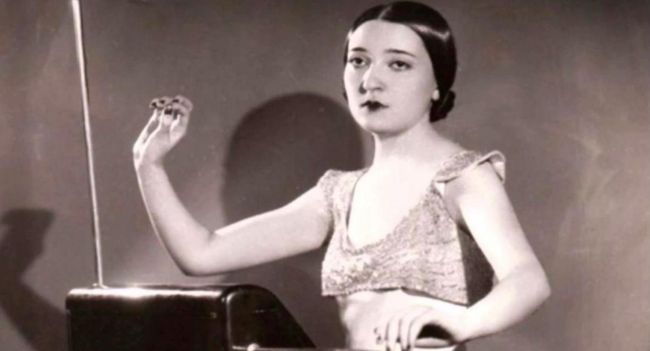Fascination with the theremin, the otherworldly electronic musical instrument developed in the late 1910s and early 1920s out of Soviet research into proximity sensors, may never cease. Some of that has to do with the unusual nature of its touchless interface, consisting of twin antennas that the player moves their hands around in order to control the tone. More of it has to do with what the few who have dared to master the theremin have achieved with it, and no discussion of the masters of the theremin can be complete without the name Clara Rockmore.
“Born in Russia, March 9, 1911, Clara inherited the family trait of perfect pitch and could pick out melodies on the piano at age two,” says the Nadia Reisberg and Clara Rockmore Foundation’s biography. Accepted into the prestigious St. Petersburg Imperial Conservatory as a violin student at the unprecedentedly young age of four, it seemed like she’d already found her path to musical stardom — until the Russian Revolution got in the way.
The family fled to America, with Clara and her pianist sister Nadia giving concerts to make money throughout the arduous journey. They arrived in New York in December 1921, but before Clara could continue her studies there, “she developed an arthritic problem with her bow arm, and had to give up the violin.”
But all was not lost: she met Leon Theremin, inventor and namesake of the theremin (previously featured here), and found herself “fascinated by the aesthetic part of it, the visual beauty, the idea of playing in the air.” Soon developing “her own finger technique, allowing her infinitely greater control of pitch and phrasing” and later suggesting modifications to the instrument to improve its range and sensitivity, she could within years play classical pieces on the theremin, making sounds no classical composer could have imagined. Her performances, sometimes accompanied by Nadia and sometimes as a part of an orchestra, led to the release of her first album (recorded by Robert Moog, whose name also echoes down the halls of electronic music), The Art of the Theremin in 1977. (Stream it on Spotify below.)
Rockmore passed away in 1998, having been brought back into the public eye a few years earlier, at least to an extent, by Steve M. Martin’s documentary Theremin: an Electronic Odyssey. Just last year, countless many more of us learned not just the word theremin but the name Clara Rockmore when Google’s front-page “doodle” celebrated her 105 birthday. Those who clicked on it could receive a brief, game-like theremin lesson from an animated version of Rockmore herself, all while hearing sounds precisely engineered to replicate her distinctive playing style. You can see the real Rockmore playing Saint-Saëns’ “The Swan” at the top of the post. Anyone who’s heard the theremin knows that no other instrument sounds quite like it — and anyone who’s heard Rockmore playing the theremin knows no other theremin has ever sounded quite like hers.
